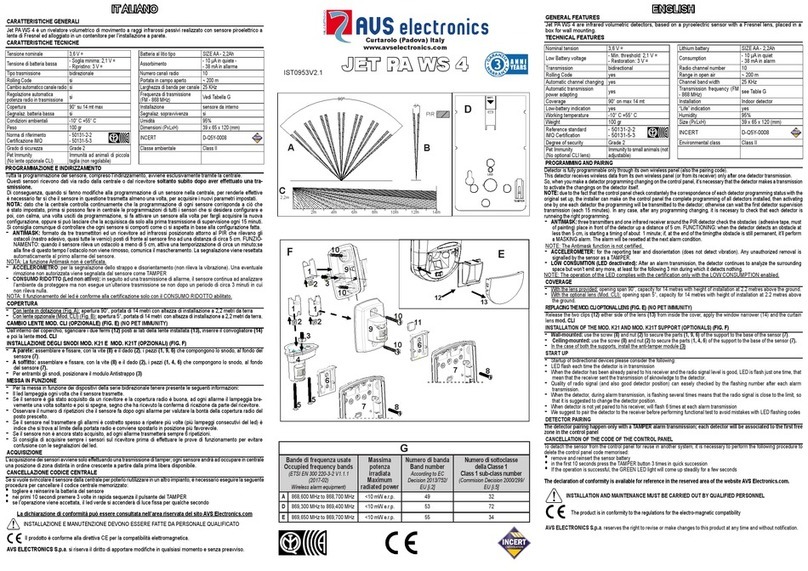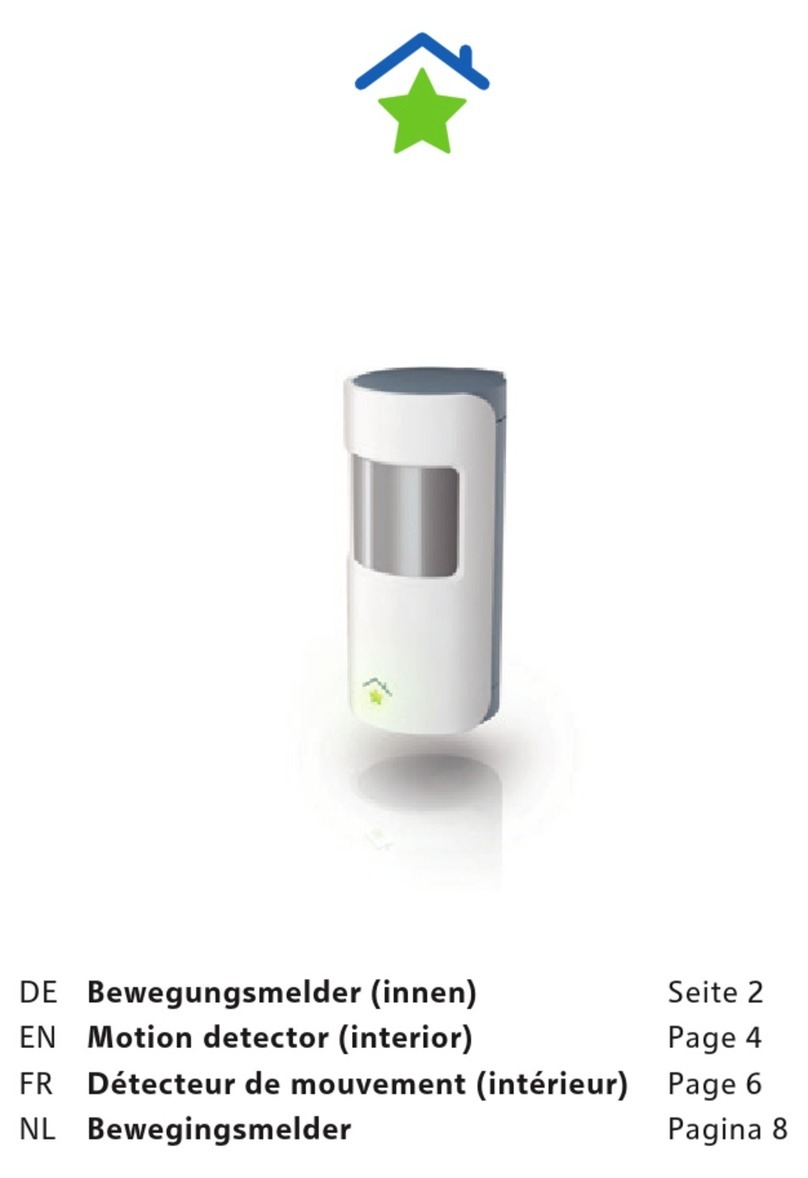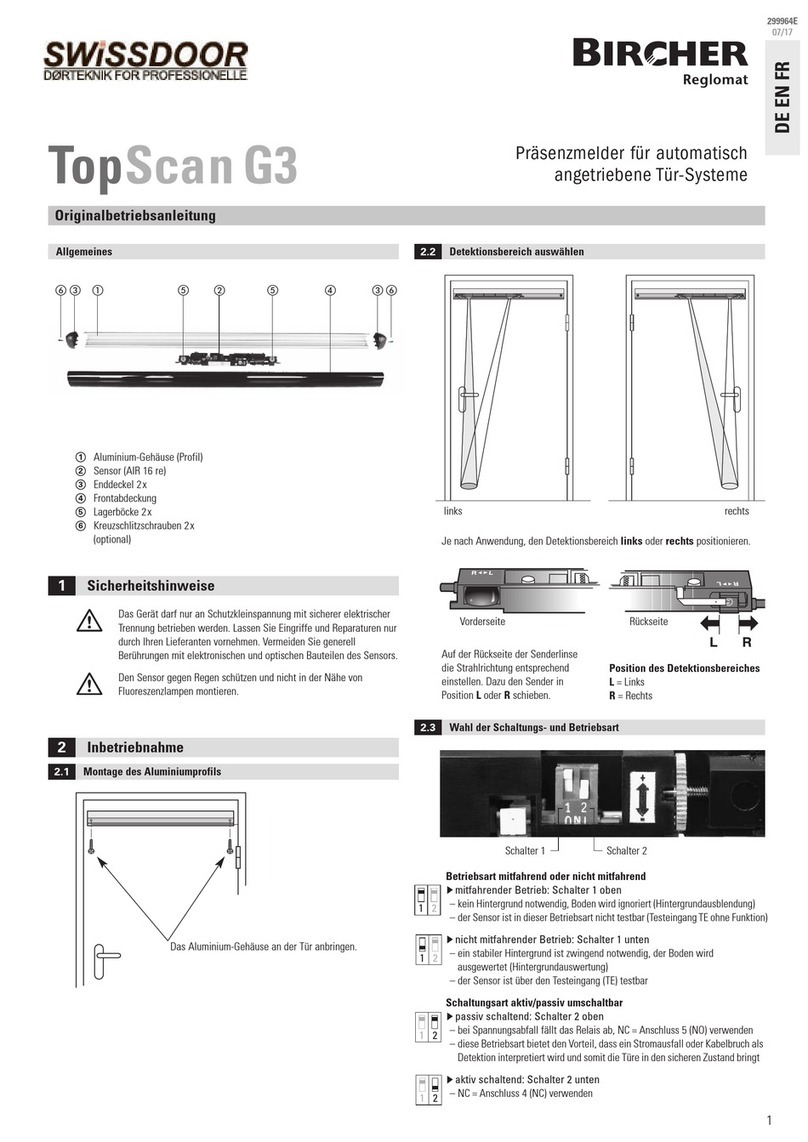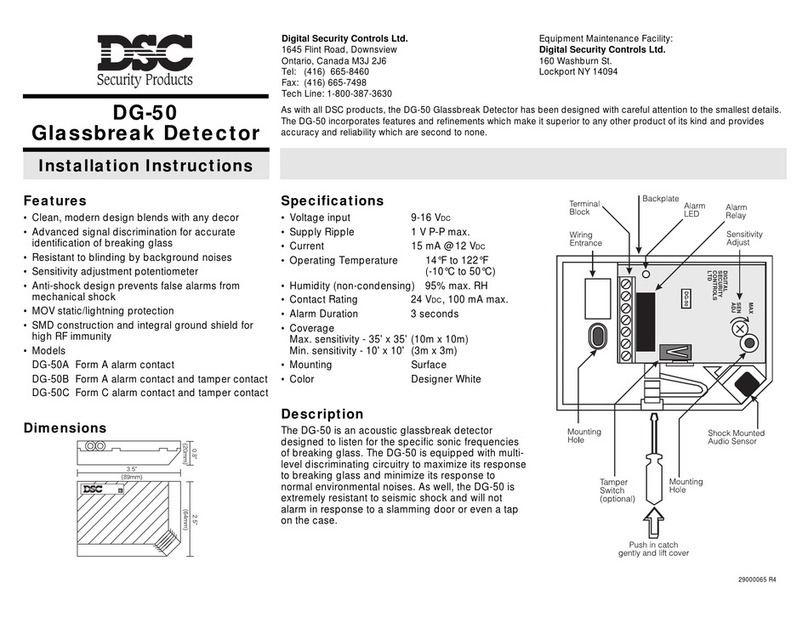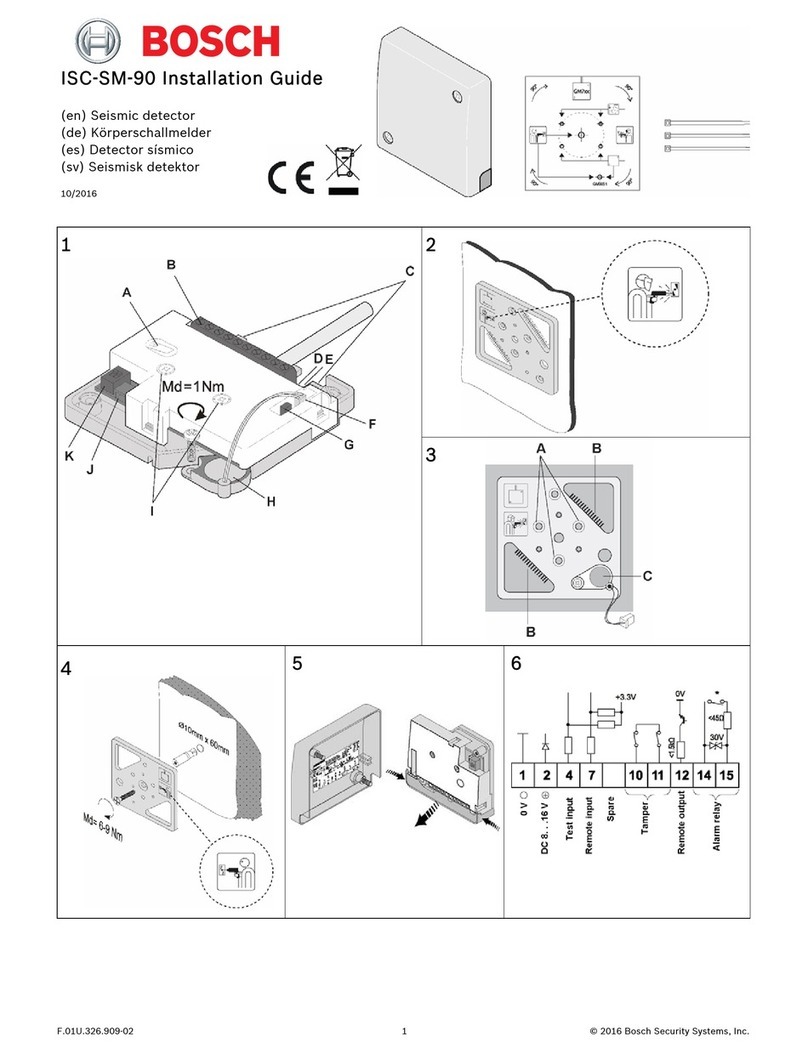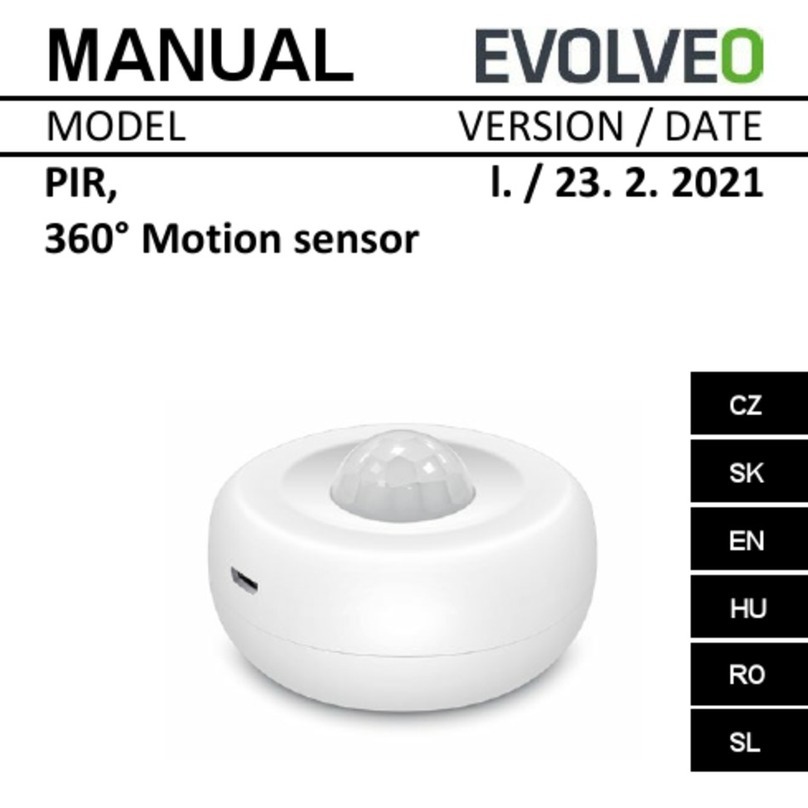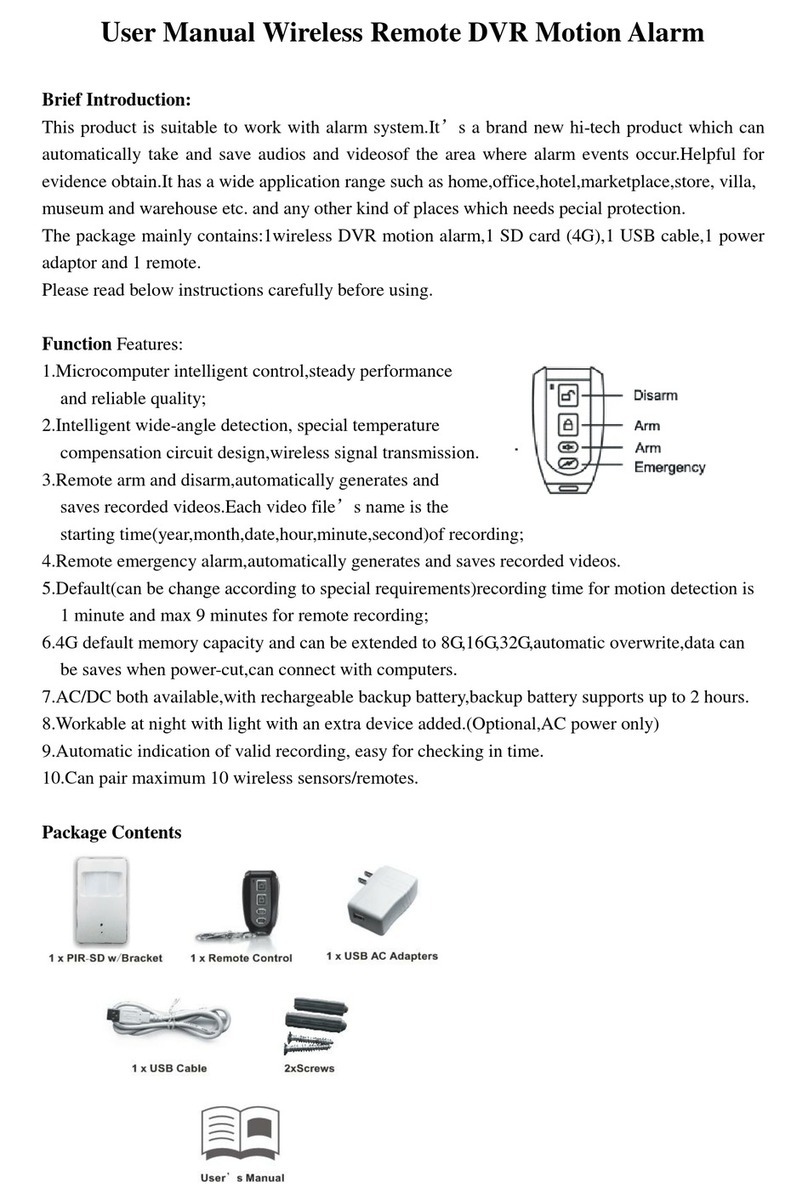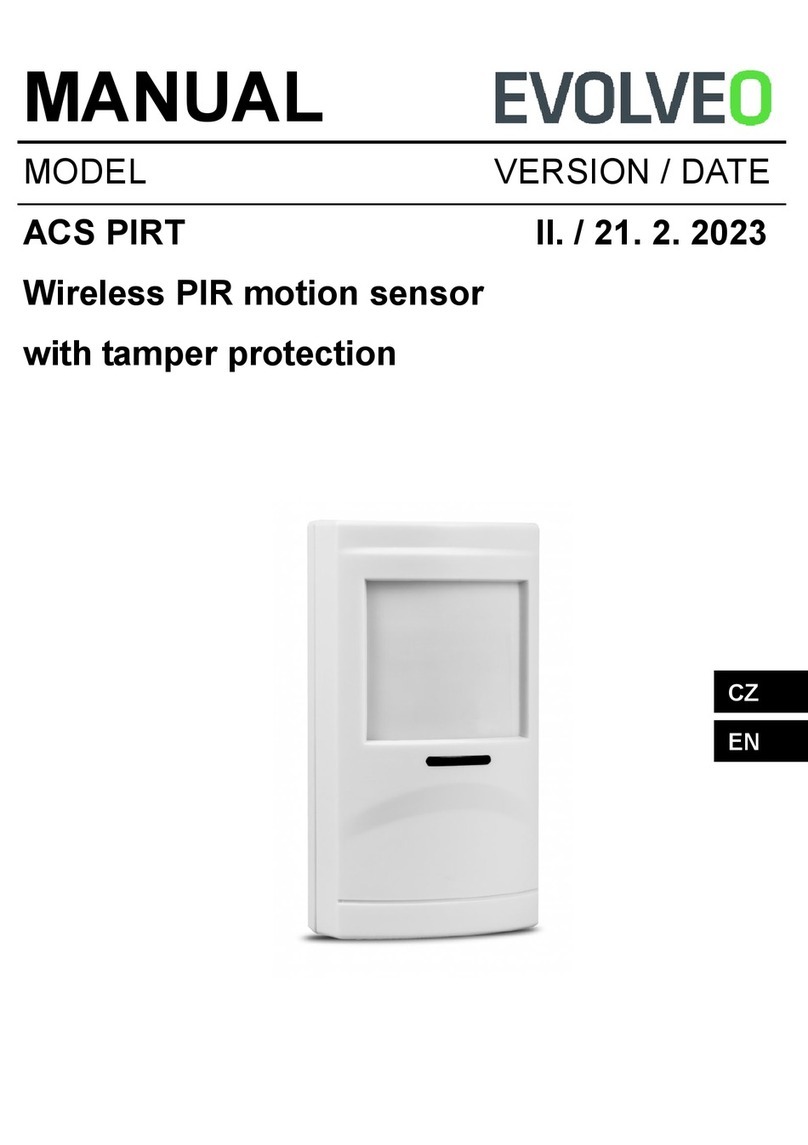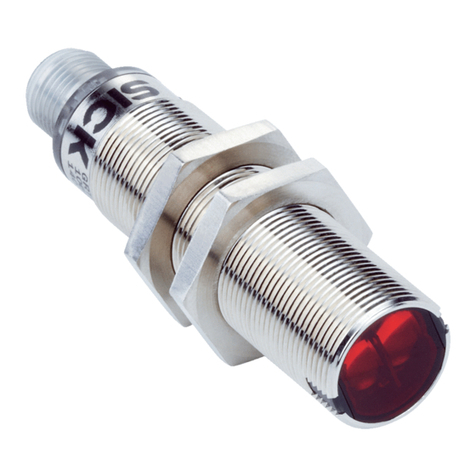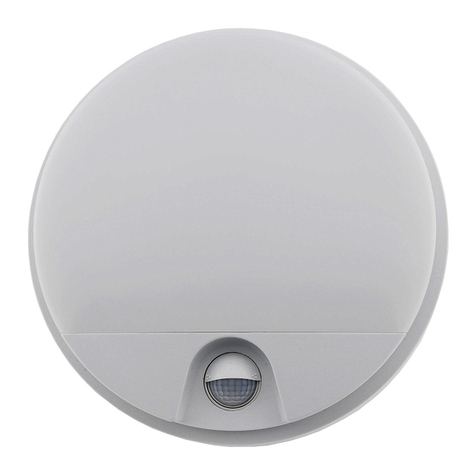iET PRS-200 Series User manual

♦PRECISION INSTRUMENTS FOR TEST AND MEASUREMENT ♦
TEL: (516) 334-5959 • (800) 899-8438 • FAX: (516) 334-
5988
www.ietlabs.com
534 Main Street, Westbury, NY 11590
IET LABS, INC.
PRS-200 SERIES
High Precision
Manual or Programmable
Decade Resistance Substituters
Operation Manual
Copyright 2005 IET Labs, Inc.
PRS200 im/July2005


iii
WARRANTY
We warrant that this product is free from defects in material and workmanship and, when properly used, will
perform in accordance with applicable IET specifications. If within one year after original shipment, it is found
not to meet this standard, it will be repaired or, at the option of IET, replaced at no charge when returned to IET.
Changes in this product not approved by IET or application of voltages or currents greater than those allowed by
the specifications shall void this warranty. IET shall not be liable for any indirect, special, or consequential
damages, even if notice has been given to the possibility of such damages.
THIS WARRANTY IS IN LIEU OF ALL OTHER WARRANTIES, EXPRESSED OR IMPLIED, INCLUD-
ING BUT NOT LIMITED TO, ANY IMPLIED WARRANTY OF MERCHANTIBILITY OR FITNESS FOR
ANY PARTICULAR PURPOSE.

vii
WARNING
OBSERVE ALL SAFETY RULES
WHEN WORKING WITH HIGH VOLTAGES OR LINE VOLTAGES.
Dangerous voltages may be present inside this instrument. Do not open the case
Refer servicing to qulified personnel
HIGH VOLTAGES MAY BE PRESENT AT THE TERMINALS OF THIS INSTRUMENT
WHENEVER HAZARDOUS VOLTAGES (> 45 V) ARE USED, TAKE ALL MEASURES TO
AVOID ACCIDENTAL CONTACT WITH ANY LIVE COMPONENTS.
USE MAXIMUM INSULATION AND MINIMIZE THE USE OF BARE
CONDUCTORS WHEN USING THIS INSTRUMENT.
Use extreme caution when working with bare conductors or bus bars.
WHEN WORKING WITH HIGH VOLTAGES, POST WARNING SIGNS AND
KEEP UNREQUIRED PERSONNEL SAFELY AWAY.
CAUTION
DO NOT APPLY ANY VOLTAGES OR CURRENTS TO THE TERMINALS OF THIS
INSTRUMENT IN EXCESS OF THE MAXIMUM LIMITS INDICATED ON
THE FRONT PANEL OR THE OPERATING GUIDE LABEL.

iii
CONTENTS
WARRANTY .......................................................................................................... i
WARNING ............................................................................................................ ii
CAUTION ............................................................................................................. ii
CONTENTS ......................................................................................................... iii
FIGURES ............................................................................................................. iv
TABLES ............................................................................................................... iv
Chapter 1: INTRODUCTION ............................................................................... 1
Chapter 2: SPECIFICATIONS ............................................................................. 3
2.1 Model Configuration and Specifications ....................................................................... 3
2.2 General Specifications .................................................................................................. 4
Chapter 3: OPERATION ...................................................................................... 6
3.1 Initial inspection and setup ............................................................................................ 6
3.2 Connection .................................................................................................................... 6
3.2.1 General Considerations ................................................................................. 6
3.2.2 Electrical Considerations ............................................................................... 6
3.2.3 Four-Wire Kelvin Lead Connections ............................................................. 6
3.2.4 Thermal emf Considerations ......................................................................... 6
3.3 Dial Setting .................................................................................................................... 7
3.4 Environmental Conditions ............................................................................................. 7
3.5 Local Operation ............................................................................................................ 7
3.6 Remote Operation ......................................................................................................... 7
Chapter 4: BCD INTERFACE OPTION .............................................................. 8
4.1 BCD Programming ....................................................................................................... 8
Chapter 5: IEEE INTERFACE OPTION ............................................................ 10
5.1 Introduction ................................................................................................................. 10
5.2 Capabilities .................................................................................................................. 10
5.3 Address Switch and Communications Settings ........................................................... 10
5.3.1 Bus Set-Up Procedure ................................................................................. 11
5.4 Controlling the Programming Impedance Substituter .................................................. 11
5.4.1 Preparation ................................................................................................... 11
5.4.2 Command String Structure ........................................................................... 11
5.5 Testing Programming .................................................................................................. 12
5.5.1 GPIB Test Keyboard .................................................................................. 12
5.5.2 DOS Programming (Legacy) ...................................................................... 13
Chapter 6: MAINTENANCE .............................................................................. 15
6.1 Verification of Performance ....................................................................................... 15
6.1.1 Calibration Interval ...................................................................................... 15
6.1.2 General Considerations ............................................................................... 15

iv
Figures
Figure 1.1 High Precision Manual or Programmable Decade Resistance Substituter .................................. 1
Figure 2.1 Typical OPERATING GUIDE Affixed to Unit ......................................................................... 5
Tables
Table 4.1 BCD INPUT Connector ......................................................................................................... 8
Table 4.2 BCD INPUT Connector PinAssignments ................................................................................ 9
Table 5.1 IEEE-488 Bus Functions ....................................................................................................... 10
Table 5.2 BusAddress Switch Settings ................................................................................................ 11

1
INTRODUCTION
PRS Series
Chapter 1
INTRODUCTION
The PRS Series (Figure 1.1) is a broad line of high
precision manual and programmable decade substi-
tuters. They provide direct resistance substitution as
well as RTD (Resistance Temperature Detector)
simulation, in a wide selection of ranges, tolerances
and ratings.
The PRS substituter is a precision resistance source
with excellent characteristics of stability, temperature
coefficient, and power coefficient. High dynamic
ranges are available, starting as low as 1 mΩ, and
extending to as many as 10 decades. These features
combined with a low virtually constant “zero resis-
tance” make for very versatile instruments.
The PRS Series features two optional special set-
tings. An “open circuit” and a “short circuit”. These
modes are useful for obtaining reproducible transi-
tions between settings, i.e. break-before-make or to
short between settings. The “short circuit” setting
also provides a reduced zero resistance.
Operation is both local using convenient direct-read-
ing front panel thumbwheel switches, and remote with
optional parallel BCD, RS-232, or IEEE-488 inter-
faces. Both can provide an optional extra “10” posi-
tion for each decade.
The PRS Series employs very low resistance, low
thermal emf relays with gold-clad silver-alloy con-
tacts. A special design keeps contact resistance to a
minimum. The gold plating keeps the silver contacts
from becoming tarnished when unused, or when only
low currents are passed through them. This is most
often the case when only minute test currents are
drawn by digital multimeters and other test instruments.
Contact resistance remains low and repeatable.
High-quality gold-plated tellurium-copper five-way
binding posts serve to minimize the thermal emf ef-
fects, which would produce errors in dc resistance
measurements. All other conductors within the in-
strument, as well as the solder employed contain no
metals or junctions that could contribute to thermal
emf problems.
With a resolution as low as 1 mΩand a maximum
available resistance of over 100 MΩ, the PRS-202
Series may be used for exacting precision measure-
ment applications requiring high accuracy, good sta-
bility, and low zero resistance. They are suited for
automatic and manual calibration and testing, simu-
lation of RTD’S, programmable loads, and many other
laboratory and industrial applications.
The PRS Series may be rack mounted to serve as
components in measurement and control systems.
Figure 1.1: High Precision Manual or
Programmable Decade Resistance Substituter

2INTRODUCTION
PRS Series
This page is intentionally left blank.

SPECIFICATIONS
PRS-202 Series
5
FIGURE 2.1 Typical OPERATING GUIDE Affixed to Unit
PRS SERIES OPERATING GUIDE
WARNING
CONSULT INSTRUCTION MANUAL FOR PROPER INSTRUMENT OPERATION
Resistance Type:
Range:
Accuracy:
Zero Resistance:
Maximum Load:
Interface:
Ground:
Operation:
Metal film.
0 to 9,999,999 Ω, in 1 Ωsteps.
±(0.1% + 30 mΩ), after subtraction of zero setting resistance.
<450 mΩ.
0.5 A, or 200 V (dc + peak ac), or 0.2 W/step, or 2 W max.,
whichever applies first.
IEEE-488-1978.
GND terminal on front panel is connected to both chassis and
earth ground.
Unit should be allowed to stabilize for one hour. For maximum
stability, allow unit to warm-up over two hours and keep free from
mechanical disturbances.
Observe all safety rules when working with high voltages or line voltages. Connect the shield to earth ground
in order to maintain the case at a safe voltage. Whenever hazardous voltages (>45 V) are used, take all
measures to avoid accidental contact with any live components: a) Use maximum insulation and minimize
the use of bare conductors. b) Remove power when adjusting switches. c) Post warning signs and keep
personnel safely away.
CAGE CODE: 62015
SN: D13-9931347
FUSE: 0.25 A
IET LABS, INC. • 534 Main Street, Westbury, NY 11590 • (516) 334-5959 • (800) 899-8438
MODEL: PRS-201-IEEE
POWER: 105-125 V, 50-60 Hz
PRSBLBL/pc/p8/PRS201IEEE/04-22-99;13

6
PRS Series
OPERATION
Chapter 3
OPERATION
The GND terminal on all models is connected to the
case and to earth and chassis grounds. This may be
used as a shield terminal.
3.2.2 Electrical Considerations
The performance of the PRS is directly affected by
the quality of the connection to the system under test.
This is particularly true with the precision series mod-
els having higher-accuracy and/or lower-impedance
decades.
For optimum performance, contact resistance should
be kept to a minimum by using the most substantial
mating connection possible, and by assuring that the
connection is well secured to the binding posts.
3.2.3 Four-Wire Kelvin Lead Connections
4-wire Kelvin leads minimize the effects of contact
resistance and approach ideal performance. The
CURRENT and SENSE HI/LO terminal pairs may
be shorted together to provide a 2-terminal connec-
tion in instances where high accuracy is not a con-
cern.
3.2.4 Thermal emf Considerations
The PRS Series uses high-quality, low-emf compo-
nents. Thermal emf is primarily attributable to the tem-
perature difference between the leads of the relay
and the contacts when temperature is applied to the
coil. This emf is of the order of 5 µV per relay, but is
not usually additive. The typical worst case is <15
µV.
3.1 Initial inspection and setup
This instrument was tested and carefully inspected
before shipment. It should be in proper electrical and
mechanical order upon receipt.
An OPERATING GUIDE is attached to the case
of the instrument to provide ready reference to speci-
fications.
Mount the unit in a standard 19" rack if the rack mount
option is specified.
3.2 Connection
3.2.1 General Considerations
The PRS Series Decade unit is built in 3-terminal or
5-terminal versions. The binding posts are standard
laboratory type and readily accept banana plugs, tele-
phone tips, spade lugs, alligator clips, and bare wire.
Binding posts are located on the front panel of the
instrument unless specifically ordered with a Rear
Output option.
The 3-terminal version posts are labeled HI, LO, and
GND. The HI and LO terminals are connected to
the ends of the internal impedance being set.
5-terminal models provide four Kelvin terminals con-
sisting of a CURRENT and a SENSE pair, each
labeled HI and LO. These minimize contact resis-
tance.
PRS-202 IEEE.2/05-12-05

OPERATION
PRS Series
7
If the effect of tens of microvolts is significant to your
application, connect to the instrument with low-ther-
mal-emf materials only. Copper wire and copper al-
loys are recommended; brass and steel should be
avoided. Tinned copper and solder are acceptable.
This emf will not be reflected if an ac measurement
instrument is employed, and can be eliminated by us-
ing a meter with “True Ohm” capability. In other
cases, the emf may represent a very small compo-
nent of a dc resistance measurement.
3.3 Dial Setting
Each decade is manually controlled via a front panel
thumbwheel that provides positions for “0” through
“9”. The total impedance is set/read directly from the
dial setting. The decimal point, if any, is marked on
the thumbwheel switches, and the steps are clearly
marked on the panel. Short Circuit / Open Circuit mode
control is only available using a Remote control op-
tion.
3.4 Environmental Conditions
The PRS is built, calibrated and intended for use in a
laboratory environment with a nominal ambient tem-
perature near 23oC. The accuracy of the unit may be
affected when operated in non-laboratory environ-
ments.Always allow the instrument to stabilize at room
temperature after unpacking or relocating the instru-
ment. Humidity should be maintained at laboratory
conditions.
3.5 Local Operation
Operation of the PRS substituter is straightforward
and graphically represented on the front panel.
1. Turn on the POWER switch. The POWER
indicator lamp, if present, should come on.
If a REMOTE option is present, the
READY and LOCAL indicators should il-
luminate.
2. Set the REMOTE/LOCAL switch to LOCAL.
3. Connect any desired instrumentation to the
front panel binding posts. The GND termi-
nal may be connected to the ground of ex-
ternal equipment. The GND terminal is con-
nected to the case and to both chassis and
earth grounds.
4. Make 4-terminal or 2-terminal connections
as described previously. A shielded set of
cables is recommended whenever ac op-
eration or high resistance are involved.
5. Set the thumbwheel switches to provide the
desired impedance in the units indicated on
the front panel.
3.6 Remote Operation
The PRS includes a REMOTE/LOCAL switch on
the front panel. The REMOTE position is a remote
enable. When in LOCAL mode, the PRS supplies
the impedance value selected using the front panel
thumbwheel switches.
When the switch is in the REMOTE position, the
PRS will supply the configured remote impedance
value only if that option asserts remote control. If
the option does not assert control, the front panel thum-
bwheel impedance value is supplied. The REMOTE
and LOCAL LEDs always indicate which interface
is controlling the impedance value.
Setting the front panel REMOTE/LOCAL switch
to LOCAL overrides the REMOTE option settings
and always sets the supplied impedance to the value
selected using the front panel thumbwheels, regard-
less of the REMOTE option’s assertion of control.
The REMOTE BCD option sets impedance values
and asserts control using TTL logic. The impedance
values are BCD encoded as shown in table 4.2.
For IEEE and RS232 units, the LOCAL indicator
remains on until communication with the unit is initial-
ized. The mode changes to REMOTE after con-
troller commands are received.

8
PRS Series
BCD INTERFACE OPTION
Chapter 4
BCD INTERFACE OPTION
4.1 BCD Programming
PRS units, with BCD interface option, come with a
BCD (Binary Coded Decimal, 1-2-4-8 coding) re-
mote programming capability accessed through the
BCD INPUT connector
The connector is a 50-pin, female, parallel-interface
industry-standard connector found on the rear panel.
Table 4.1 shows the connector pin numbering . Table
4.2 gives the pin assignments for the BCD input for
this connector. There can be as many as 10 digits to
be input. For any unit with fewer than 10 digits, only
the implemented subset of these will be operational.
All other digits may be ignored, and the associated
pins may be left open or shorted to ground.
Once the unit is switched to REMOTE with the front
panel knob, it may be set to either LOCAL or RE-
MOTE states under external control by properly se-
lecting pins 21 and 22 on the BCD INPUT rear panel
connector as shown in Table 4.1. Note that both pins
must be set. The REMOTE and LOCAL led’s will
respond accordingly. Once the PRS is set to Re-
mote, the thumbwheel switches become disabled, and
impedance control is transferred to the rear panel
connector.
In addition, two special optional function pins are pro-
vided to set the unit to Open-circuit or (optional) Short-
circuit states across the HI and LO terminals on the
front panel. Applying a low to pin 34 activates an
open circuit condition. If the short circuit option is
present (this option provides a lower resistance short
circuit than a zero setting), applying a high to pin 35
provides a short circuit. If these functions are not
required, these two pins may be left open, or the op-
posite logic levels may be applied, i.e. high to pin 34
and low to pin 35. If both pins are activated, the
system will be in the short-circuit mode. If the short-
circuit option is not present, pin 20 may be left in any
state.
Table 4.1 BCD INPUT Connector
(Viewed from rear of instrument)
25 24 ……………. 2 1
50 49 ……………. 27 26

9
PRS Series
BCD INTERFACE OPTION
Table 4.2 BCD INPUT Connector Pin Assignments
P in
N o.
B C D C ode
W e i g h t
Fun c ti on
3 0 1
3 1 2
3 2 4 0 .01 -0 .0 9 Ω
3 3 8
4 3 1
4 2 2
4 1 4 0 .1- 0 .9 Ω
4 0 8
3 9 1
3 8 2
3 7 4 l- 9 Ω
3 6 8
4 7 1
4 6 2
4 5 4 1 0 -9 0 Ω
4 4 8
4 1
3 2
2 4 100-900 Ω
1 8
8 1
7 2
6 4 1-9 k Ω
5 8
1 2 1
1 1 2
1 0 4 1 0 -9 O k Ω
9 8
1 6 1
1 5 2
1 4 4 1 0 0 -90 0 k Ω
1 3 8
2 0 1
1 9 2
1 8 4 l-9 M Ω
1 7 8
2 9 1
2 8 2
2 7 4 1 0 -9 0 M Ω
2 6 8
3 4 O p en -cir cuit co n t ro l
3 5 Sho rt -circu it co n t ro l
(o p t io n al)
2 3 E art h gro u n d
2 4 + 5 V, l0 m A m axim u m
2 5 E art h gro u n d
2 1 LO C A L/R EM O T E s elect
2 2 LO C A L/R EM O T E s elect
4 8 R es erv ed f or IE EE -4 8 8
4 9 R es erv ed f or IE EE -4 8 8
5 0 R es erv ed f or IE EE -4 8 8
Low fo r LO C A L; H igh fo r R EM O T E
D e s c r i pti on
Lo w t o act iv at e ; o t h erw is e h igh o r o p en .
H igh t o act iv at e; o t h erw is e lo w o r o p en ; If o p t io n
is ab s en t , p in m ay be in an y s t at e.
H igh fo r LO C A L; Low fo r R EM O T E

10
PRS-200 Series
IEEE-488 PROGRAMMING
Chapter 5
IEEE-488 PROGRAMMING
5.3 Address Switch Settings
The BUS ADDRESS DIP (dual in-line package)
switch on the rear panel of the unit establishes the
automatic address mode of the unit. These settings
are read and saved only during power up. Changing
these settings during operation will have no effect
unless power is momentarily turned off.
For AUTO ADDRESSING, select an unused bus ad-
dress between 0 and 30 decimal. Set the BUS AD-
DRESS for the desired address as described below.
Set the switch actuators or rockers to the ON or OFF
positions on the body of the switch to correspond
respectively to logical “1” and a logical “0”. To pro-
5.1 Introduction
The IEEE-488 Interface converts the PRS-200 Se-
ries Programmable Impedance Substituter into an in-
strument compatible with the standard IEEE-488-
1978 interface bus. This capability allows the PRS-
200 instrument to becomes part of a fully automated
instrumentation system.
If necessary, it is strongly recommended that the user
refer to documentation for background on the opera-
tion of this interface. In particular, the standard is avail-
able on-line at http://www.ieee.org or by contacting
the IEEE at:
IEEE Corporate Office
3 Park Avenue, 17th Floor
New York, New York
10016-5997 U.S.A.
Tel: +1 212 419 7900
Other tutorials are available on-line; consult IET for
additional information. A software GPIB “keyboard”
may be requested from IET to perform elementary
commands for training and testing. See Section 4.5.1
5.2 Capabilities
The IEEE-488 interface provides remote control over
all of the front panel functions except for the POWER
switch. Table 4.1 lists the particular IEEE-488 capa-
bilities implemented in this unit.
Code Description Comments
SR0 Source
Handshake
Not
implemented
AHl Acceptor
Handshake Included
RL1 Remote, Local Included
SR0 Service Request Not
implemented
T0 Talker Not
implemented
TE0 Extended Talker Not
implemented
Ll Listener Included
LE0 Extended
Listener
Not
implemented
PP0 Parallel Poll Not
implemented
DC1 Device Clear Included
DT0 Device Trigger Not
implemented
C0 Controller Not
implemented
Table 5.1 IEEE-488 Bus Functions

IEEE-488 PROGRAMMING
PRS-200 Series
11
5.4 Controlling the Programmable
Impedance Substituter
5.4.1 Preparation
After performing any necessary initialization related
to the controller in the system, proceed as follows:
1. Set the PRS-200 unit to LISTEN using its
preset address. The LISTEN indicator lamp
on the front panel should come on.
2. Set the PRS-200 to REMOTE using its pre-
set address. The REMOTE indicator lamp
on the front panel should come on.
3. Output a command string as described be-
low.
5.4.2 Command String Structure
The command string to the PRS-200 unit is in the
form of an (n+1) character string where n is the
number of decades on the front panel thumbwheel
switches. This number is constructed as the follow-
ing concatenation:
| Mode Command Digit | n character Impedance Command|
The Mode Command Digit is required only when-
ever it is desired to activate the optional OPEN CIR-
CUIT or SHORT CIRCUIT modes; otherwise it is
not required.
For a device having neither option, the least signifi-
cant characters up to a maximum of n are read as a
command; the Mode Command Digit or any other
additional characters to the ‘left’ or on the most sig-
nificant end of the string are ignored by the device.
Whenever there are leading zeroes in the command,
the command string in all cases can be shorter than n.
Mode Command Digit =
0, 4, 8, or absent for NORMAL operation
1, 5, or 9 for OPEN CIRCUIT operation -optional
2, 3, 6, or 7 for SHORT CIRCUIT operation -optional
X or absent for units without either option
Decimal
Address
SWITCH
SETTINGS
5-4-3-2-1
Decimal
Address
SWITCH
SETTINGS
5-4-3-2-1
0 0-0-0-0-0 16 1-0-0-0-0
1 0-0-0-0-1 17 1-0-0-0-1
2 0-0-0-1-0 18 1-0-0-1-0
3 0-0-0-1-1 19 1-0-0-1-1
4 0-0-1-0-0 20 1-0-1-0-0
5 0-0-1-0-1 21 1-0-1-0-1
6 0-0-1-1-0 22 1-0-1-1-0
7 0-0-1-1-1 23 1-0-1-1-1
8 0-1-0-0-0 24 1-1-0-0-0
9 0-1-0-0-1 25 1-1-0-1-0
10 0-1-0-1-0 26 1-1-0-1-0
11 0-1-0-1-1 27 1-1-0-1-1
12 0-1-1-0-0 28 1-1-1-0-0
13 0-1-1-0-1 29 1-1-1-0-1
14 0-1-1-1-0 30 1-1-1-1-0
15 0-1-1-1-1 31 Reserved,
do not use
gram the PRS-200 to the desired address, set switches
“1” through “5” as shown in Table 5.2. Follow the
switch legend imprinted on the rear panel and not on
the body of the switch, if any.
The T, L, and S switches for TALK ONLY, LIS-
TEN ONLY, and SRQ ENABLE respectively, are
not implemented on this unit and must remain OFF at
all times.
5.3.1 Bus Set-Up Procedure
1. Turn off the POWER switch.
2. Set the BUS ADDRESS switch as described
above.
3. Turn on the POWER switch. This allows
the unit to read the status of the rear panel
BUS ADDRESS switch settings. They can
only be read at turn on, so if they need to
be changed, the unit must be reinitialized
by being momentarily turned off.
4. The READY indicator lamp on the front
panel should come on with turn on.
Table 5.2 Bus Address Switch Settings

12
PRS-200 Series
IEEE-488 PROGRAMMING
Impedance Command =
1 to n characters (0-9) for impedance value;
n characters (with leading zeros if necessary) are
required if the Mode Command Digit is being
transmitted.
This Impedance Command must be provided as an
ASCII string made up of the characters “0”-“9”, rep-
resenting the digits 0-9 or HEX 30-39 respectively.
For example, the command strings for the following
resistance settings for a unit with 7 decades and 1 Ω
minimum steps are as follows:
100 ΩΩ
ΩΩ
Ω100 or 0100 or 00100 or 000100 or 0000100
600567 ΩΩ
ΩΩ
Ω600567
Open circuit 1XY.XXY-X where X represents any digit
Short circuit 2XXXXXX where X represents any digit
For a second example, the command strings for the
following resistance settings for a unit with 5 decades
and .01 Ωminimum steps are as follows:
.99 ΩΩ
ΩΩ
Ω99 or 099 or 0099 or 00099 or 00.99, etc.
(decimal point is ignored)
100.00 ΩΩ
ΩΩ
Ω10000
231.05 ΩΩ
ΩΩ
Ω23105 or 231.05 (decimal point is ignored)
Open circuit 1XXXXXX where X represents any digit
Short circuit 2XXXXXX where X represents any digit
The command string may be output with or without
leading zeros in the normal, i.e. non short or open
circuit modes.
This command string must be followed by an appro-
priate terminator such as a CR (carriage return), LF
line feed), comma, or the presence of an EOI signal
on the bus which will terminate the LISTEN mes-
sage.
If there is a decimal point on the thumbwheel
switches, this decimal point may be optionally in-
cluded in the command string.
In the optional Open-circuit and Short-circuit modes,
the n-character Impedance Command must be given
in full including all leading zeros. The relays will be
set as commanded although these values will be over-
ridden by the short or open circuit modes. This fea-
ture may be used to provide a controlled transition
between two resistance values without being con-
cerned by the indeterminate transitional switching of
the various relays. This is done as follows to change
from resistance R1 to resistance R2:
1. Output a command for R1.
2. Output a command for R1 plus a short cir-
cuit Mode Command digit.
3. Output a command for R2 plus a short cir-
cuit Mode Command digit.
4. Output a command for R2.
Clearly the above example would also apply for the
Open circuit mode.
Illegal characters in the command string will be ig-
nored except for HEX 3B-3F which will result in an
open circuit or an erroneous resistance setting, de-
pending on the particular model configuration. If an
open circuit is desired, these characters may be tested
to determine if they produce an open circuit, or IET
may be consulted.
5.5 Testing and Programming
5.5.1 GPIB Test Keyboard
To aid the user in operating the PRS-200, a GPIB
“Keyboard” Controller program - the easiest way to
control GPIB devices without writing a program - is
available from IET. This GPIB Keyboard program
automatically finds your device at startup and it lets
you enter just the data that you want to send to the
device. This program works with ICS, Measurement
Computing and National Instruments controllers.
To implement, request from IET Labs Tech Support
a download of ICS_GPIBkybd_Install.zip.
Unzip the file and follow instructions to install.
Open the application. You may use the Find Listen-
ers button to confirm that the PRS unit is recognized.
Other instruments may also be recognized at this time.
Enter and set the address to the PRS address. Use
the window to send commands to the PRS as follows

IEEE-488 PROGRAMMING
PRS-200 Series
13
PO resistance string
where the resistance string is constructed as described
above in Section 4.4.2.
5.5.2 DOS Programming (Legacy)
A sample BASIC program is given on the following
page. It is used by a MetraByte Corporation Model
MBC-488 Controller Board.
This program first initializes the controller, then sets
the device to the REMOTE and LISTEN modes,
then outputs a command string provided by the op-
erator to the device, and finally sets the device to the
LOCAL mode. Note that the variable BA0% refers
to the controller board number.

14
PRS-200 Series
IEEE-488 PROGRAMMING
100 '*********************************************************************
110 '* SAMPLE PRS-200 SERIES IEEE-488 COMMAND PROGRAM *
120 '* *
130 '* MX3 *
140 '*********************************************************************
150 CLEAR 20000, 40000!
160 CLS : KEY OFF
170 '
180 'This program let's you write a device dependent command string
190 'to any device number.
200 '
210 '---- Load link that calls DOS resident driver (REMOVE IF COMPILED)
220 '
230 DEF SEG = &H3600
240 BLOAD "GPIBBASI.BIN", 0
250 IE488 = 0
260 '
270 '------ Initialize MBC-488 board using "SYSCON" command
280 '
290 CMD$ = "SYSCON MAD=3, CIC=1, NOB=1, BA0=&H300" 'change to suit
300 A% = 0: FLAG% = 0: BRD% = 0
310 CALL IE488(CMD$, A%, FLAG%, BRD%) 'initialize
320 IF FLAG% <> 0 THEN PRINT "Error #"; HEX$(FLAG%); " in initialization": STOP
330 '
340 INPUT "Enter device number: ", DN
350 '
360 '------ Set device into REMOTE -------------------------
370 CMD$ = "REMOTE " + STR$(DN)
380 CALL IE488(CMD$, A%, FLAG%, BRD%)
390 IF FLAG% <> 0 THEN PRINT "Error in setting to remote. Error code "; HEX$(FLAG%): INPUT "Con-
tinue "; G$: IF G$ = "y" OR G$ = "Y" THEN 400 ELSE 100
400 '
410 '--------------- Send command to device ----------------
420 '
430 PRINT : INPUT "(type 'Q' to quit) Enter device command string: ", X$
435 IF X$ = "Q" THEN 530 ELSE IF X$ = "" THEN 430
440 CMD$ = "OUTPUT " + STR$(DN) + "[$]"
450 CALL IE488(CMD$, X$, FLAG%, BRD%)
460 IF FLAG% <> 0 THEN PRINT "Error in output of command. Error code "; HEX$(FLAG%): INPUT
"Continue "; G$: IF G$ = "y" OR G$ = "Y" THEN 400 ELSE 100
470 GOTO 350
530 RUN "MENUV"

MAINTENANCE
PRS-200 Series
15
Chapter 6
MAINTENANCE
6.1 Verification of Performance
6.1.1 Calibration Interval
The PRS-200 Series instruments should be verified
for performance at a calibration interval of twelve
(12) months. This procedure may be carried out by
the user, if a calibration capability is available, by
IET Labs, or by a certified calibration laboratory. If
the user should choose to perform this procedure, then
the considerations below should be observed.
6.1.2 General Considerations
It is important, whenever testing the PRS-200 Series
Decade units, to be very aware of the capabilities and
limitations of the test instruments used. Such instru-
ments would have to be significantly more accurate
than the specified accuracy for all applicable ranges,
in order to perform this task, allowing for a band of
uncertainty of the instrument itself, consult IET Labs
for information.
It is important to allow both the testing instrument
and the PRS-200 Substituter to stabilize for a num-
ber of hours at the nominal operating temperature of
230C, and at nominal laboratory conditions of humid-
ity. There should be no temperature gradients across
the unit under test.
In the case of a resistance substituter, substantial
Kelvin type 4-wire test terminals should be used to
obtain accurate low-resistance readings. It is conve-
nient, once the zero-resistance has been determined,
to subtract it from the remaining measurements. This
can be automatically done in many instruments which
have an offset subtraction capability.
Steps should be taken to minimize emf effects by main-
taining an even temperature and by using only low-
emf connectors. Using meters with a “True Ohm”
function is recommended.
Proper metrology practices should be followed in per-
forming this verification.

This manual suits for next models
1
Table of contents
Popular Security Sensor manuals by other brands
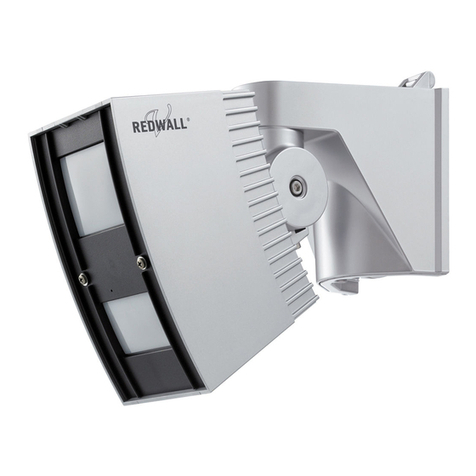
Redwall
Redwall V Series installation instructions
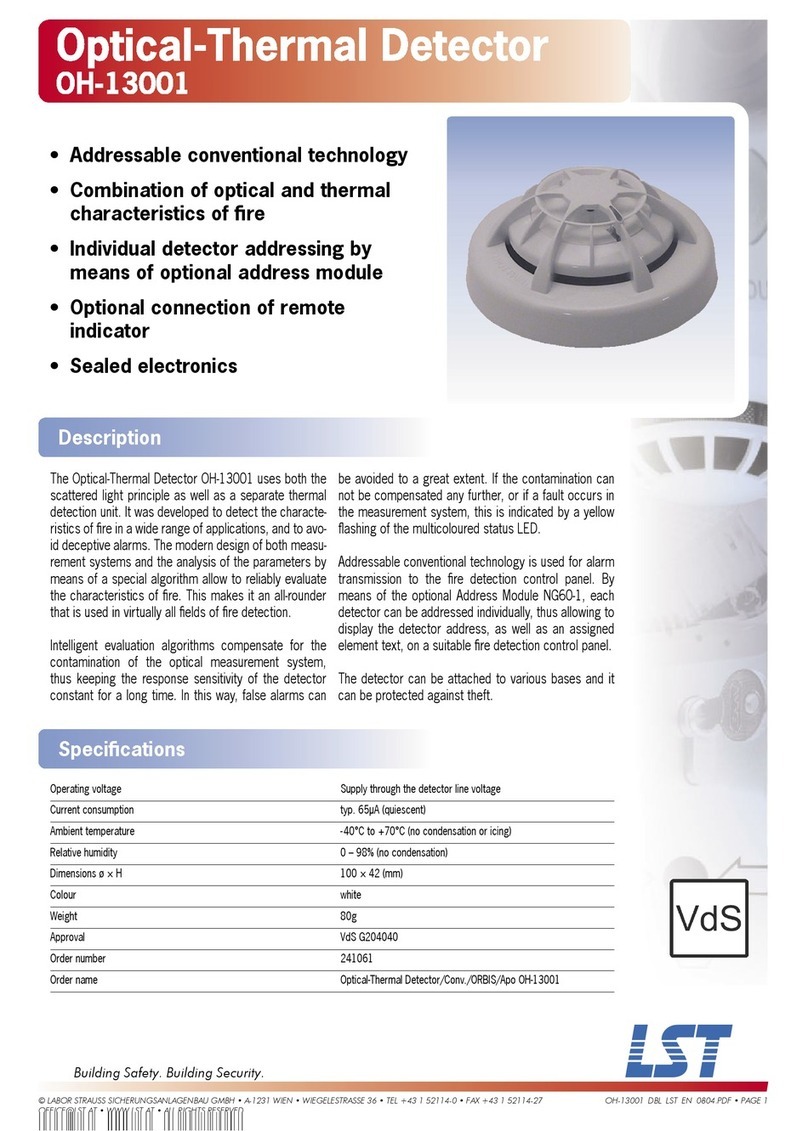
LST
LST OH-13001 Specification sheet

Sierra Monitor Corporation
Sierra Monitor Corporation 3600I instruction manual
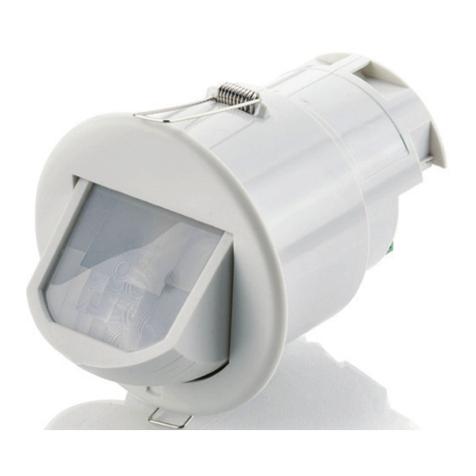
LEGRAND
LEGRAND CP Electronics EBDRC-DD installation guide

HD Electric
HD Electric V-WATCH Operating instructions manual
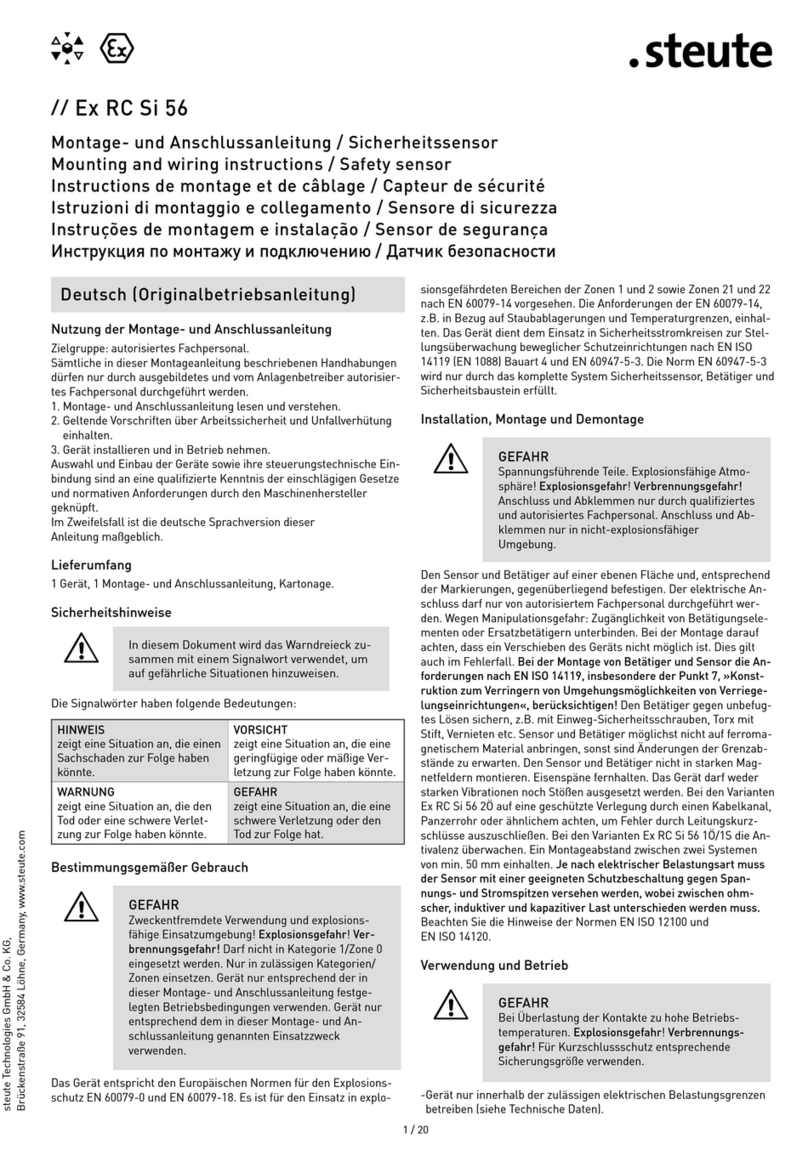
steute
steute EE RC Si 56 Series Mounting and wiring instructions
